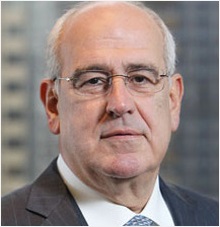 Market update for the week ending August 25 2018
Market update for the week ending August 25 2018
CRUDEOIL 68.52 — GOLD 1.112.30 — SILVER 14.78 — EUR/USD 1.16
Stocks end week at record highs. Longest Bull Market in history – Stock ended the week at record highs, for the first time since January, after Fed Chairman Powell released remarks stating that inflation is tame, and that The Fed no longer fears the economy will overheat and spike inflation. These remarks led investigators to assume he was signing that The Fed was nearing the end of interest rate hikes. The market also surpassed the bull market of the 1990’s as the longest bull market ever hitting 3,450 days this week. The Dow Jones Industrial Average closed the week at 25,790.35, up from 25,669.33 last week. It is up 4.3% year to date. The S&P 500 closed the week at 2,874.69, up from 2,850.13 last week. It’s up 7.1% year to date. The NASDAQ closed the week at 7,945.98, up from 7,816.33 last week. It’s up 15.1% year to date.
Treasury Bond Yields drop – The 10 year treasury bond closed the week yielding 2.82%, down from 2.87% last week. The 30 year Treasury bond yield ended the week at 2.97%, down from 3.03% last week.
Mortgage rates slightly lower again this week – The August 23, 2018 Freddie Mac Primary Mortgage Survey reported that the 30 year fixed mortgage rate average was 4.51%, down from 4.53% last week. The 15 year fixed was 3.98%, down from 4.01% last week. The 5 year ARM was 3.82%, down slightly from 3.86% last week. from June and 3.4% below last July’s level when home sales totaled 421,460 on an annualized basis. The state-wide median price paid for a home was $591,460 in July, up 7.6% from last July. On a regional level prices in Los Angeles County rose 5.5%, Orange County prices rose 5.6%, and Ventura County prices rose just 2.1% from July 2017. Inventory levels continued to increase. The unsold inventory index ticked up to a 3.3 month supply in July, up from 3.2% last July. A normal market has a 6 -7 month supply. Active listings increased for a fourth consecutive month after 33 months of declines, increasing 11.9% from last July.
What is Mortgage Insurance Premium – If you're a first time mortgage borrower, you might be asking yourself, "What is MIP?" Home buyers considering getting a loan from the Federal Housing Administration will find MIP, or mortgage insurance premium, especially relevant because all FHA loans require insurance. Here's what you need tfrom June and 3.4% below last July’s level when home sales totaled 421,460 on an annualized basis. The state-wide median price paid for a home was $591,460 in July, up 7.6% from last July. On a regional level prices in Los Angeles County rose 5.5%, Orange County prices rose 5.6%, and Ventura County prices rose just 2.1% from July 2017. Inventory levels continued to increase. The unsold inventory index ticked up to a 3.3 month supply in July, up from 3.2% last July. A normal market has a 6 -7 month supply. Active listings increased for a fourth consecutive month after 33 months of declines, increasing 11.9% from last July.
- What is MIP? – Essentially, MIP is an insurance policy required by the government on an FHA loan. Since the down payment on FHA loans can be as little as 3.5% of the total price, the government requires added financial protection. The purpose of mortgage insurance is to protect the lender, not the borrower. With FHA loans, the insurance is to protect the federal government in the event a borrower defaults on the mortgage.
- How does MIP work? – When you receive approval for a loan, the FHA will require you to pay an upfront MIP (UFMIP) at the time of closing and an annual
- MIP, which is calculated every year and paid once a month. Currently, the UFMIP rate is 1.75% of the amount of your FHA loan. For example, if you borrow $250,000, your upfront costs would be $4,375. The current annual premium rate is 0.85% for most FHA loans. The UFMIP will be part of the total closing expenses, which include your mortgage principal, interest, property taxes, and homeowners insurance. You can also roll the cost of the UFMIP into your escrow payments.
- How does MIP benefit the homeowner? – The MIP protects the lender, but this fee is also what allows buyers to put as low as 3.5% down on a home. Essentially, an MIP puts homeownership in reach for many who wouldn’t be able to afford it otherwise. Lenders are much more willing to lend money for the purchase or refinance of a home knowing they’re protected against loss.
- Can you cancel an MIP policy? – In the past, you could dump your MIP once you reached at least 20% equity in your home. But the housing crisis changed a lot of things, including insurance on FHA loans. Now, you must maintain the MIP for the life of the FHA loan. Because of this, there’s only one option if you want to cancel your MIP: You can refinance your FHA loan to a conventional loan. It’s important








